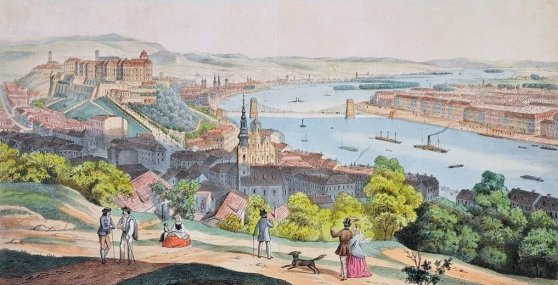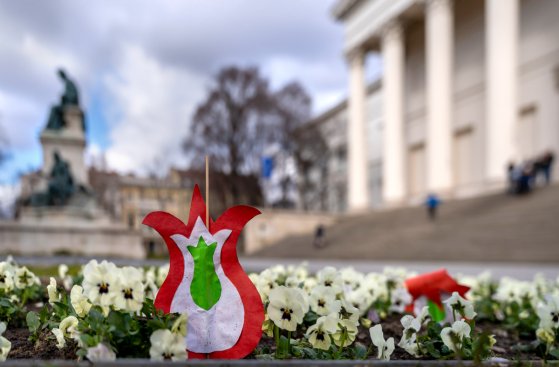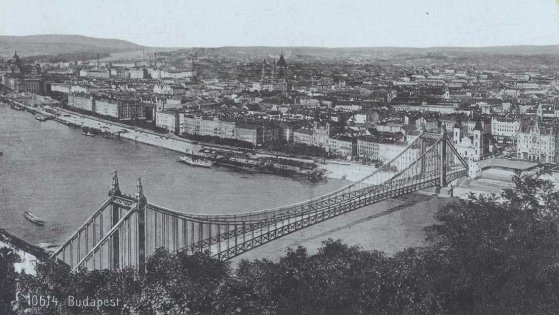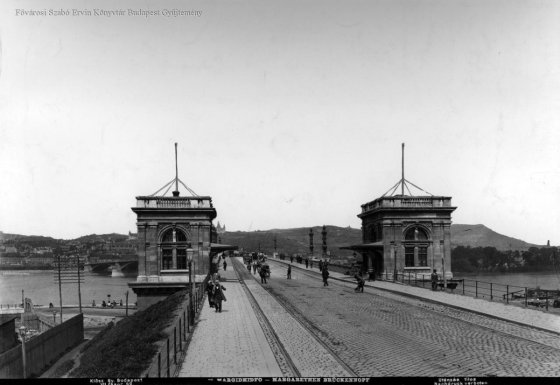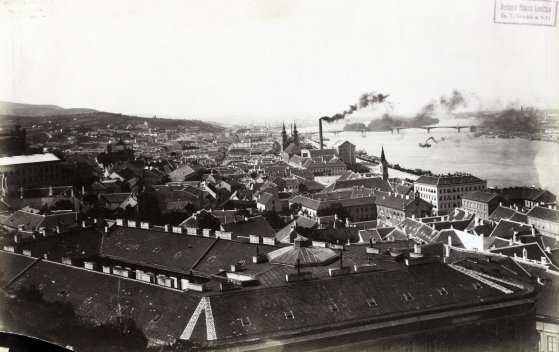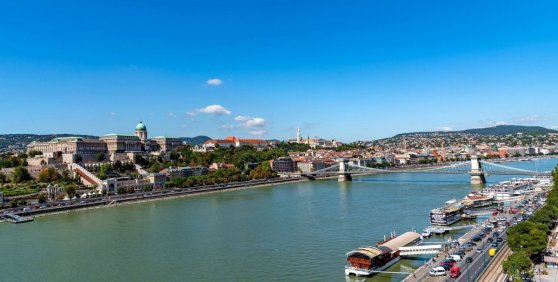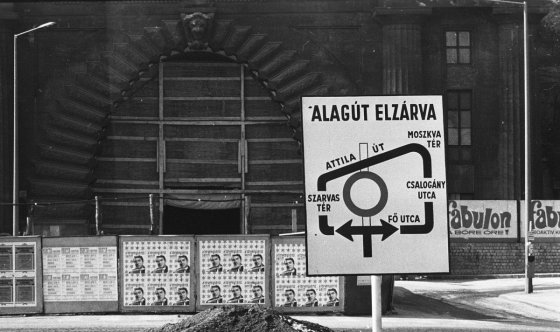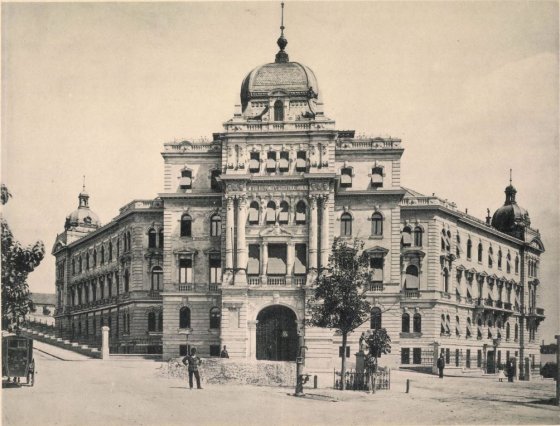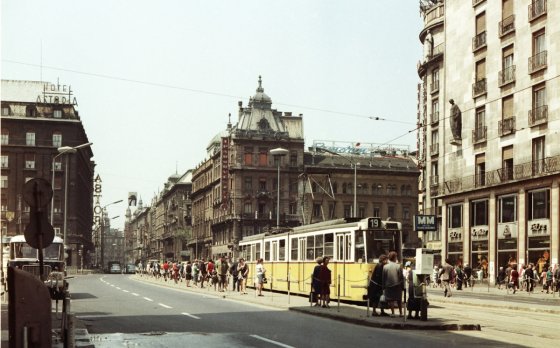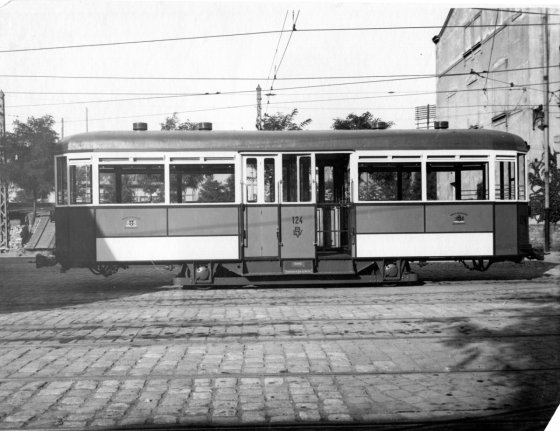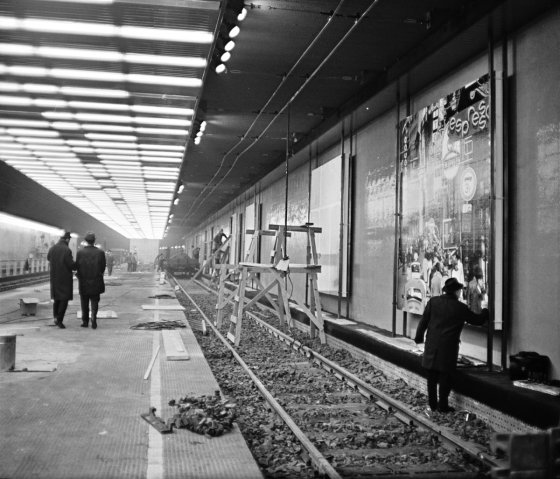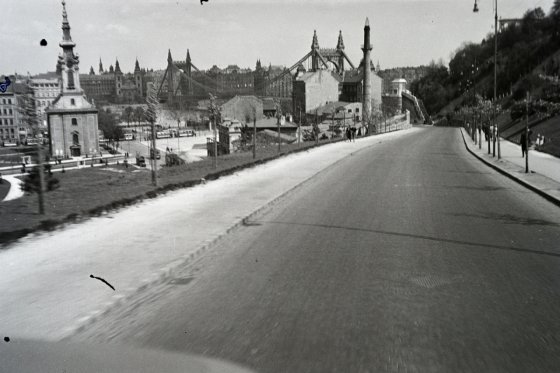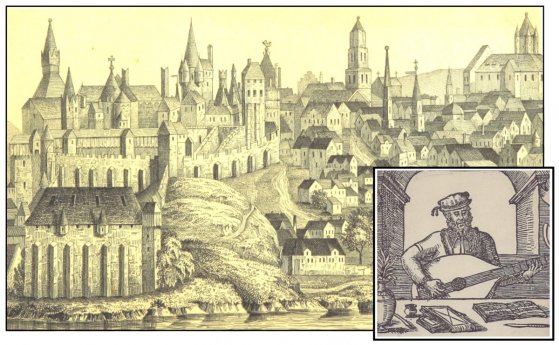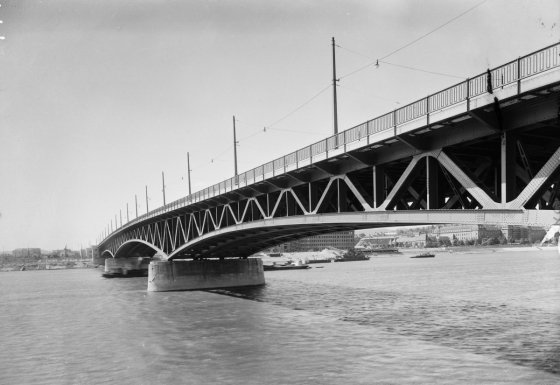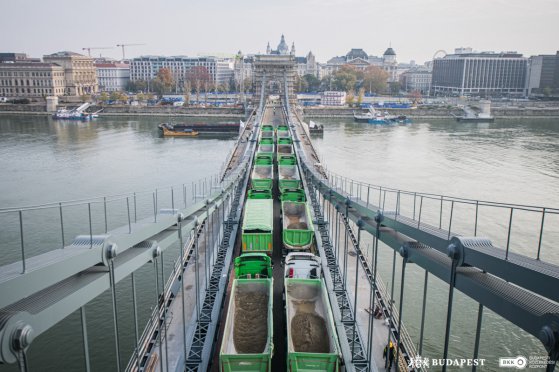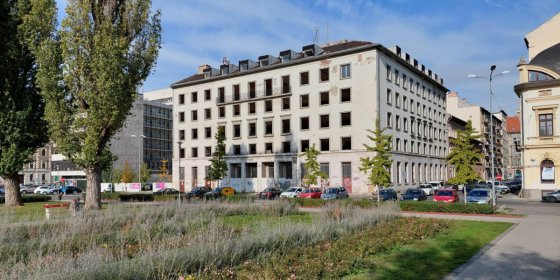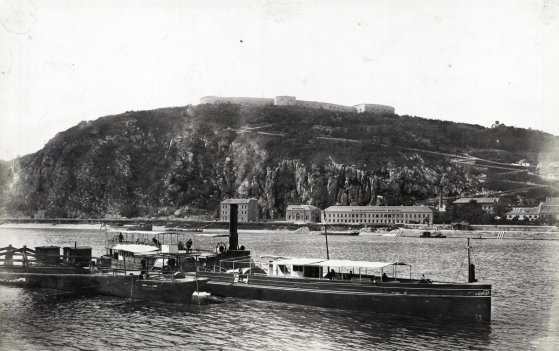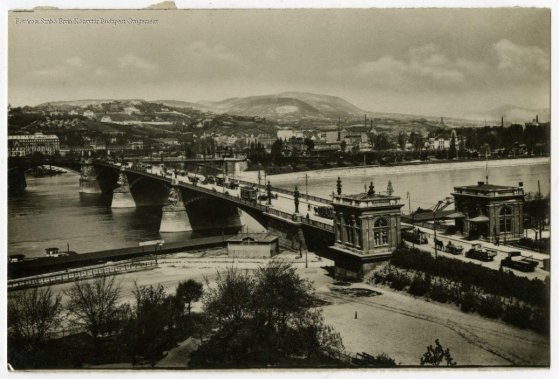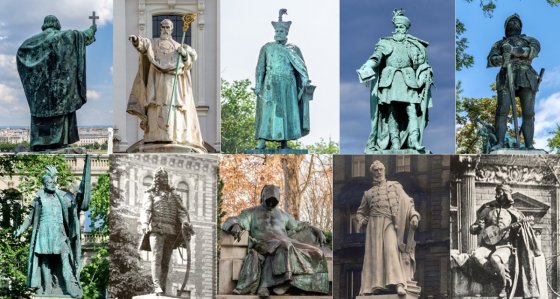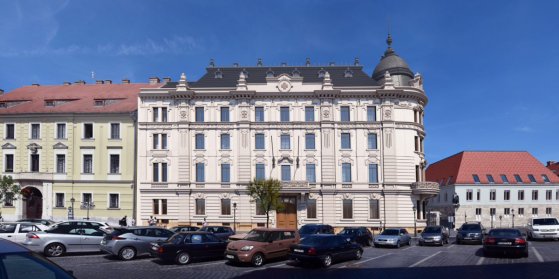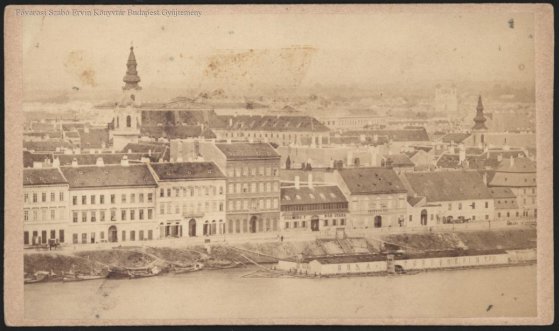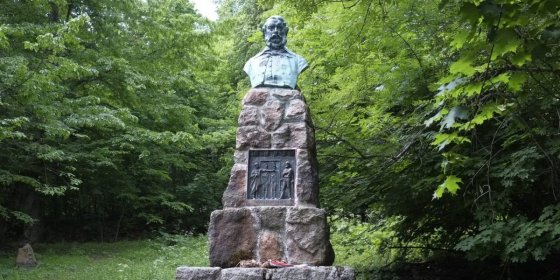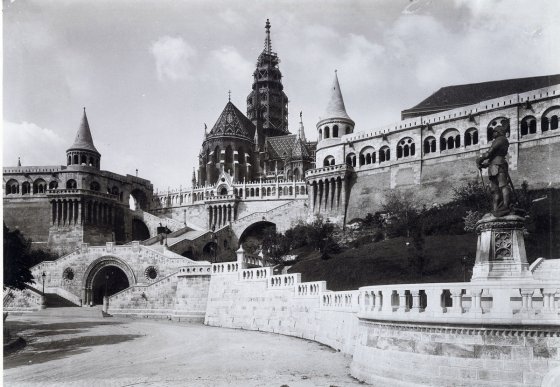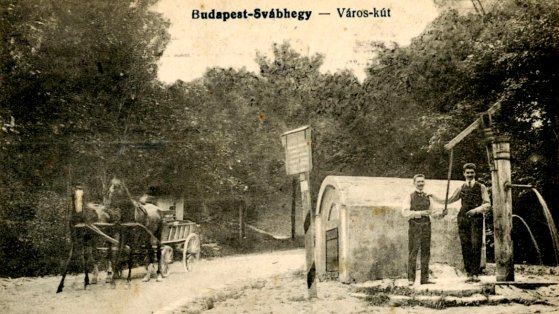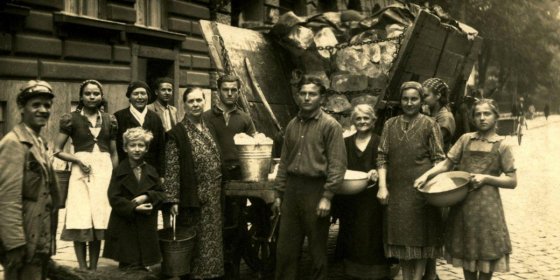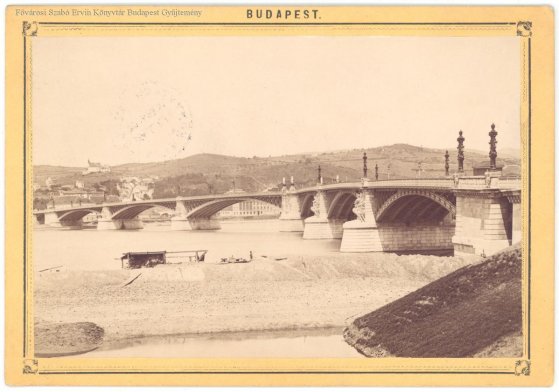 The „intertwined history” of the bridges and the city of Budapest
Which ideas and events have shaped the fate of bridges of Budapest and the cityscape? Alongside many other interesting facts, this question is also answered this newly published book by the Budapest City Archives, which introduces the history of bridges in Budapest.
The „intertwined history” of the bridges and the city of Budapest
Which ideas and events have shaped the fate of bridges of Budapest and the cityscape? Alongside many other interesting facts, this question is also answered this newly published book by the Budapest City Archives, which introduces the history of bridges in Budapest.
Buda
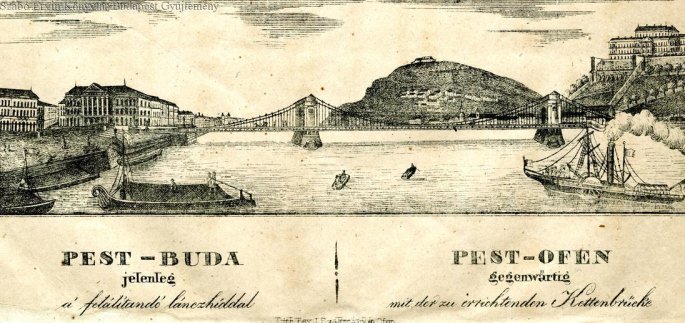 The Bridge Report, which brought a turning point in the history of Budapest
The Bridge Report, which brought a turning point in the history of Budapest
March 31, 2023 at 3:00 PM
A travel report that changed the history of Pest and Buda, as well as Hungary. The little book contributed to the change of half a thousand years of legal customs and the implementation of an investment of unprecedented size and technical quality. This book was The Bridge Report [Hídjelentés in Hungarian].
Pest and Buda in 1848
March 16, 2023 at 11:00 AM
Perhaps the best-known Hungarian historical date is 15 March 1848. But what was the city of Pest and Buda like 175 years ago, where a few literary young men recited poems and printed a manifesto in a heightened mood, accompanied by a relatively large but peaceful crowd on that rainy March day, thus setting a new direction for the development of Hungary?
In the footsteps of Petőfi: A walk around the sites of the Revolution of 15 March in Pest and Buda
March 15, 2023 at 11:00 AM
The sites of the Revolution of 15 March 1848 in Pest and Buda can still be visited today, and even some of the buildings that played an important role in the events are still there: standing in front of the National Museum, the Landerer and Heckenast Printing House, the Locotenential Council and the Táncsics-prison, anyone can recall the events.
Budapest then and today – 5 photos showing how much the city has changed
February 23, 2023 at 4:00 PM
The capital, which is 150 years old this year, has changed so much over time that every day citizens can marvel at a section of a street, an old building that has disappeared or that has miraculously survived. This time, with the help of five pairs of images, Pestbuda presents the passage of time from the houses of the old inner city of Pest to the flood in Tabán.
The meeting of two brilliant Hungarians with the florist - Donát Bánki and János Csonka patented the carburettor 130 years ago
February 11, 2023 at 1:00 PM
For a long time, the carburettor was an essential part of car engines. Its creators, János Csonka and Donát Bánki applied for a patent for this device on 11 February 1893. According to legend, the two friends got the idea while watching a flower seller on the Inner Ring Road.
Who should pay for the bridge? - The Pest and Buda horse-drawn railway companies merged 145 years ago
February 4, 2023 at 2:00 PM
The desire to save money forced the merger of the Pest and Buda horse-drawn railway companies because horse-drawn railway traffic was only allowed on Margit Bridge if the companies paid the additional cost of the wider bridge. Since the two companies could not agree on the use of the bridge, 145 years ago the larger, richer company bought the smaller one instead. This made it possible for horse-drawn railway transport to start between Pest and Buda a year later, in 1879.
On the way to Greater Budapest
February 2, 2023 at 12:30 PM
The area of Budapest has changed several times in the last 150 years. The unification of 1950, the creation of today's Budapest, did not come out of nowhere, at that time there had already been talking about developing Budapest and its surroundings for decades, and harmonising the ideas.
A tender is announced for the presentation of the values and identity of the city districts
January 17, 2023 at 6:30 PM
In connection with the 150th anniversary of the unification of Pest, Buda and Óbuda, the Budapest Cultural Centre has announced a tender to which cultural institutions maintained by the district local councils can apply. Support can be obtained for the organisation of cultural and artistic programs and events that express the identity of the district and present the specificities of the district.
The renovation of the Buda Castle Tunnel began 50 years ago on the occasion of the 100th anniversary of the city unification
January 8, 2023 at 2:00 PM
The Buda Castle Tunnel is an important traffic route in Budapest and also an interesting technical monument. When it was handed over in 1857, it was part of the route leading to the only bridge at the time, and it has not lost its traffic importance even into the 21st century. Although it was designed for horse-drawn carriages, today it is used by cars. The current appearance of the passage took shape 50 years ago, the Tunnel was closed on 8 January 1973 due to the works.
The headquarters of the Hungarian Central Statistical Office is 125 years old
January 3, 2023 at 3:30 PM
The Hungarian Royal Central Statistical Office was established in 1871. For a long time, the institution did not have an independent home and was constantly forced to move. The turning point occurred in 1896 when a legal article was published on the construction of the independent building. The plans were prepared by the renowned architect and university professor Győző Czigler. The handover of the new headquarters took place on 18 December 1897, but the staff of the office only took possession of the building in January 1898.
The last tram passed through Rákóczi Road and Erzsébet Bridge 50 years ago
December 30, 2022 at 6:00 PM
Tram traffic started on Rákóczi Road already 125 years ago, and there was a time when five different lines passed through here. But the means of transport, which is very popular with the travelling public, was gradually pushed out of the inner city districts. The last tram passed through Rákóczi Road and Erzsébet Bridge 50 years ago, on 31 December 1972, and its journey ended at Móricz Zsigmond Square. The demolition of the tracks soon began. In recent years, it has been brought up more and more often that the tram should be brought back to this route.
Beszkárt, the capital's public transport company, was founded 100 years ago
December 28, 2022 at 6:00 PM
Budapest's public transport was operated by several companies for a long time, for example, there was a period when the tram services only were operated by three different companies. But 100 years ago, the Budapest Székesfővárosi Közlekedesi Részvénytársaság [Budapest Capital Transport Company], or Beszkárt, was founded, which soon gained control over all the capital's means of public transport.
The Batthyány Square terminus of the suburban railway was handed over 50 years ago
December 23, 2022 at 12:30 PM
The Budapest terminus of the suburban railway [HÉV] from Szentendre has been moved several times, most recently just 50 years ago, when it moved to its current location, Batthyány Square. The timing and the location were no coincidence either, as the suburban railway was able to connect to the metro this way which was also handed over at the time. The current terminus was handed over 50 years ago, but it may also change in the future.
The first section of Hegyalja Road was completed 90 years ago
December 15, 2022 at 11:00 AM
Nowadays, Hegyalja Road is one of the most important traffic routes in Buda, as it connects Budaörsi Road with Erzsébet Bridge. Its existence is natural to everyone now, many people get to Lake Balaton this way, but when the original Erzsébet Bridge was built, the road was not yet ready: its first section, which was built by public workers during the economic crisis, was handed over 90 years ago. The investment caused controversy, some feared for the silence of the Tabán.
A world star raised in Buda in the Middle Ages - memories of Bálint Bakfark and the street named after him
December 12, 2022 at 9:00 AM
In the heyday of the Renaissance, a lute artist educated in Buda went on a European tour to impress the rulers and noble courts of the continent with his brilliant music, even generating sympathy for the cause of the Kingdom of Hungary, which was languishing under the threat of the Ottoman Empire. As a student, Bálint Bakfark was able to see Buda just before the long Turkish occupation. His memory is preserved today by a small street, next to which the medieval city wall stretched.
The rebuilt Petőfi Bridge was handed over 70 years ago
November 23, 2022 at 11:00 AM
When the predecessor of today's Petőfi Bridge was completed in 1937, there was hardly any traffic on it, as the Buda side was largely undeveloped. It was only given a short time as it was destroyed eight years later along with the other Danube crossings in Budapest. When the reconstruction of the bridges began, it was preceded by the restoration of several crossings, then it was finally handed over only in 1952. The new structure was three metres wider, and it also had a bicycle track, which was also important at the time because many people used it to go to work since cars were not allowed for private use.
This is how the Chain Bridge was load tested
November 12, 2022 at 4:30 PM
On Saturday, 12 November, the load-bearing of the Chain Bridge was tested with 24 20-tonne trucks. Based on the primary data, the crossing passed well.
The Party Office on the former Köztársaság Square does not allow the past to be sealed off
October 22, 2022 at 9:00 AM
Although the party office with a dark past has been continuously deteriorating for years in the former Köztársaság, today's II. János Pál pápa Square, it has not yet been possible to demolish or rebuild it. Moreover, its immediate surroundings were recently declared life-threatening and closed, so instead of being converted into a residential building as planned, the socialist realism style building continues to remind us of the bloody events of the 20th century and the 1956 revolution.
Budapest acquired two hated buildings 125 years ago
October 21, 2022 at 10:00 AM
Several well-known symbols of oppression of Hungary and Budapest stood in the centre of the capital even in the decades after the Austro-Hungarian Compromise. One is the Citadella fortress built to intimidate the city after the defeat of the War of Independence on top of Gellért Hill, and the other is the huge New Building, also known as the prison of soldiers of the 1848 national army, with a bad memory, on the site of today's Szabadság Square. Budapest acquired these two military facilities in October 1897. The New Building was demolished in a short time, but they could not do anything with the Citadella for decades.
It was handed over 85 years ago, but the widened Margit Bridge exploded 7 years later
October 1, 2022 at 11:30 AM
Margit Bridge was completed as a real luxury investment in the 1870s, under the direction of a French engineer. But traffic at Budapest's second Danube crossing remained very low until the end of the century. However, at the beginning of the 1930s, it already proved to be narrow, so it was decided to rebuild and widen it. The inauguration was held 85 years ago, on 1 October 1937.
The gift of the King: the legend of the ten statues
September 25, 2022 at 3:30 PM
It has been 125 years since Franz Joseph gave ten statues to Budapest on 25 September 1897. Most of the statues are still elegant decorations of the city to this day, and Pestbuda reported about them several times. However, we have now looked into what could have prompted Franz Joseph to give a gift.
The former headquarters of the Red Cross Society will soon show its original appearance
September 24, 2022 at 9:00 AM
The reconstruction of the building in Buda, originally designed by Alajos Hauszmann and Dezső Hültl, began in 2021, and recently the structural construction work was completed, so in addition to the construction of the roof and facade, the interior work will start in the autumn. With the reconstruction of the house at 1-2 Dísz Square, a wound in the cityscape that has been open for more than seventy years will be healed.
The last major cholera epidemic
September 23, 2022 at 11:00 AM
The last major cholera epidemic broke out 150 years ago and reached Pest and Buda in the fall of 1872. They tried many things to fight it, but still, thousands of people died from the disease. With the end of the epidemic, significant health improvements began in the capital.
Lajos Kossuth's first public statue in Budapest - Special creation in the Zugliget Forest
September 21, 2022 at 11:00 AM
Few people know that at the end of Mátyás Király Road in Zugliget, in the forest, there is a special, 110-year-old statue of Kossuth on a huge pedestal. On the 220th anniversary of the former reformist politician's birth, Pestbuda will show the exact circumstances under which the work of art ended up in the Zugliget Forest, and also examine whether this was really the first public Kossuth Statue in Budapest.
The predecessor of Open-Air Stage: The Park cinema opened a 100 years ago in Városmajor
September 14, 2022 at 5:00 PM
Over the past hundred years, a lot has changed in Városmajor, but culture and guaranteed entertainment have always been present and can still be found in the capital's first public park. The predecessor of the Városmajor Open-Air Stage, the open-air Park cinema, opened here more than a hundred years ago, but the fate of the park was also very interesting after that. In 1935, the well-known stage was built, which, along with its surroundings, has undergone continuous transformations over the past century, including recent times.
Skulls under the Fisherman's Bastion - The Forgotten St. Michael's Chapel
September 13, 2022 at 2:30 PM
In the last years of the 19th century, during the works before the foundation of the Fisherman's Bastion, a cavity hiding skulls emerged from the ground, which the architect Frigyes Schulek referred to as one of the Castle's old dungeons. But he could have guessed its original function because he deemed it worthy of preservation, but the place was then forgotten again, only to be found again in the middle of the 20th century: now the place has been identified as the medieval St. Michael's Chapel, which since 1997 has been one of the most interesting details of the Fisherman's Bastion.
A forgotten occupation: water sellers on the streets of Pest and Buda
August 11, 2022 at 6:47 PM
Water is a basic necessity for life, so its significance has been extremely important in all ages. Today it is natural that water flows from the tap, but in the past this was not the case, water was also brought to the houses by vendors so that people could wash, cook, clean themselves, and most importantly, drink. In the 19th century, Pest and Buda began to develop significantly, the local wells and sources could no longer fully satisfy the needs, so water sellers appeared who measured their portage for money.
The plot of the demolished Burg Hotel was transferred to the property manager of the MNB
August 5, 2022 at 5:30 PM
The former Diplomatic House on Szentáromság square was demolished at the beginning of 2022, and a new conference center will be built in its place, the visual plans of which have already been presented. The plot was recently transferred to the property manager of the MNB.
When icemen still walked the streets of Pest and Buda
August 5, 2022 at 2:26 PM
The heat is raging on the streets of Budapest, and we are greeted by increasingly hot days. During this unusually warm period, we always think of the possibilities of refreshment, and of cooling with the beneficial effect of ice. In the last century, one of the characteristic figures of the streets of Budapest was the iceman, who transported huge blocks of ice to cool food, fill ice stacks, and cut them to the required size. Long after the appearance of the first refrigerators, even in the 1950s and 1960s, ice trucks were on the streets of Pest and Buda, as evidenced by contemporary photographs.
The construction of the Margaret Bridge began before the city unification - piling began 150 years ago
August 1, 2022 at 9:00 AM
The Margaret Bridge was the second bridge between Pest and Buda, the construction of which began 150 years ago, on 1 August 1872, even before the unification of the city. Many people criticized the designated location, but the government decided that the new Danube crossing should connect to the planned Outer Ring Road and through it to the Sugárút [Avenue]. The bridge was designed by a French engineer and built by the French company he founded, and was completed in four years.
More articles
 The „intertwined history” of the bridges and the city of Budapest
Which ideas and events have shaped the fate of bridges of Budapest and the cityscape? Alongside many other interesting facts, this question is also answered this newly published book by the Budapest City Archives, which introduces the history of bridges in Budapest.
The „intertwined history” of the bridges and the city of Budapest
Which ideas and events have shaped the fate of bridges of Budapest and the cityscape? Alongside many other interesting facts, this question is also answered this newly published book by the Budapest City Archives, which introduces the history of bridges in Budapest.
 Drama on the university wall - The heroic monument was planned 95 years ago
In the constant hustle and bustle of the Egyetem Square in Pest, the students may not even notice the monument that decorates the short section of wall between the church and the central building of ELTE. However, it commemorates their predecessors, the heroes who fought for their country in World War I, and those who heroically helped them. The first design of the dramatically collapsing soldier was born in 1928, ninety-five years ago.
Drama on the university wall - The heroic monument was planned 95 years ago
In the constant hustle and bustle of the Egyetem Square in Pest, the students may not even notice the monument that decorates the short section of wall between the church and the central building of ELTE. However, it commemorates their predecessors, the heroes who fought for their country in World War I, and those who heroically helped them. The first design of the dramatically collapsing soldier was born in 1928, ninety-five years ago.
 A message from the former school: An exhibition in memory of János Neumann was opened at the Fasori Secondary School
An exhibition was opened in János Neumann's former school, the Fasori Lutheran Secondary School, on the occasion of the 120th anniversary of the world-famous mathematician's birth. In the exhibition presenting the former Neumann milieu, paintings, graphics, photos, furniture, and objects tell the story of the art-supporting spirit of the noble bourgeois family at the turn of the century.
A message from the former school: An exhibition in memory of János Neumann was opened at the Fasori Secondary School
An exhibition was opened in János Neumann's former school, the Fasori Lutheran Secondary School, on the occasion of the 120th anniversary of the world-famous mathematician's birth. In the exhibition presenting the former Neumann milieu, paintings, graphics, photos, furniture, and objects tell the story of the art-supporting spirit of the noble bourgeois family at the turn of the century.

